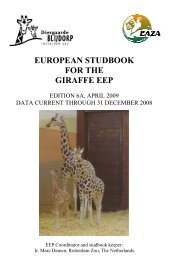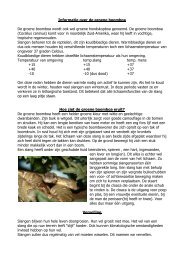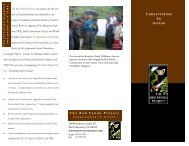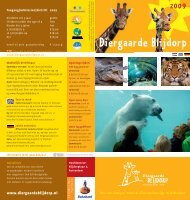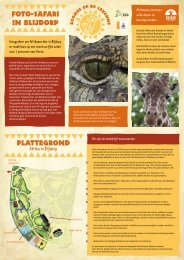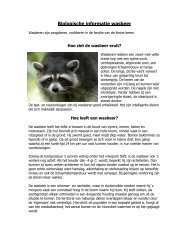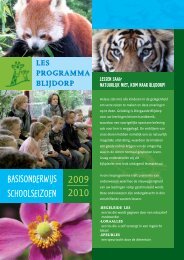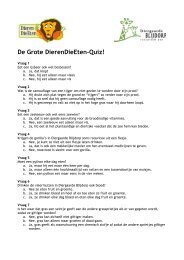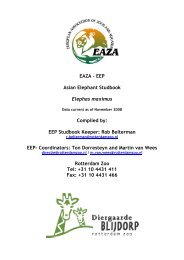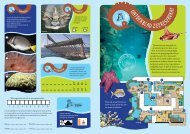Create successful ePaper yourself
Turn your PDF publications into a flip-book with our unique Google optimized e-Paper software.
<strong>EEP</strong> STUDBOOK CROWNED PIGEONS<br />
The provincial governments have responsibility for functions delegated by the national<br />
government, and include the development of natural resources, including agriculture, fishing<br />
and forestry, education and industry, in addition to the provision of health services, and<br />
education.<br />
There is considerable overlap of authority between the national and provincial governments in<br />
many areas. Provincial governments are funded primarily by grants from the national<br />
government, although the provinces have limited authority to impose certain taxes and fees,<br />
including sales tax on goods and services provided within the province. Most provincial<br />
governments operate as business ventures within the province (UBD, 1997).<br />
Legal system<br />
The legal system in Papua New Guinea is the common law system based on the English and<br />
Australian codes. Most civil matters can be dealt with through the district courts, or<br />
ultimately, the national court. The final appeal is to the Supreme Court of Appeal in Port<br />
Moresby for any civil or criminal matter. To supplement this, many local matters are settled<br />
by village courts and local village administrators (UBD, 1997).<br />
Language<br />
English is the official language of government and commerce, but the language understood by<br />
the majority of Papua New Guineas is Pidgin, or "tok pisin". In 1969 the orthography of<br />
Melanesian Pidgin English was standardised.<br />
The spelling used in the Nupela Testamen (the New Testament in Pidgin) was declared the<br />
norm to follow, because this 861-page book has become the best-seller of South Pacific<br />
(Mihalic, 1971). In 1971, the "Jacaranda Dictionary and Grammar of Melanesian Pidgin was<br />
published and until now this is considered to be the official book for the Pidgin language.<br />
There is a strong tendency towards the standard English, and at some primary and secondary<br />
schools Pidgin has already been banned. But in the remote areas of Papua New Guinea (the<br />
majority of the country!) Pidgin is the most common language. English is, however, having<br />
an influence on it. Having also been derived historically from English, it naturally already<br />
carries along much of the English influence in its grammatical framework.<br />
This language consists of only a few thousand words, and has, for example, no past and no<br />
plural. A lot of words are almost the same as in English, only they use the suffix "pela", for<br />
example strongpela and bigpela. This is also almost done by the <strong>number</strong>s: wanpela, tupela,<br />
tripela and so on. The English "I go", is in Pidgin "mi go", but "I went" (the past time "I go"),<br />
one says in Pidgin "mi go pinis" ("I go and it is finished").<br />
One child is "wanpela pikinini", two, three children are "tupela, tripela pikinini" and if<br />
somebody has more than three children (most Papua New Guineas do), one has "plenty<br />
pikinini" (Mihalic, 1971). In addition, over 700 different languages have been officially<br />
identified in Papua New Guinea. Most of them are only spoken by a few hundred people, who<br />
live very isolated and most languages do not even have a name, but are simply called "tok<br />
ples"; the "talk" of the "place".<br />
120



